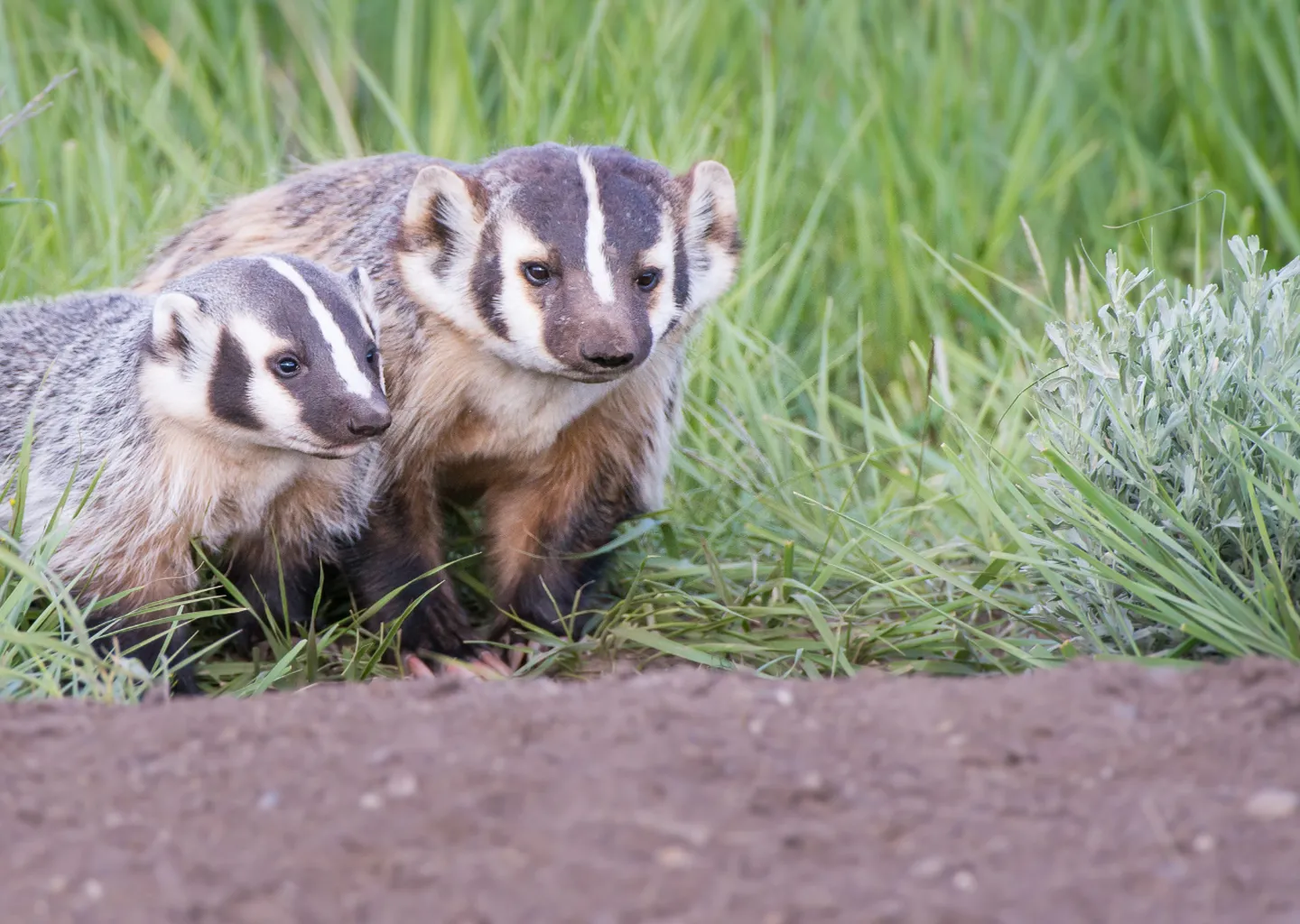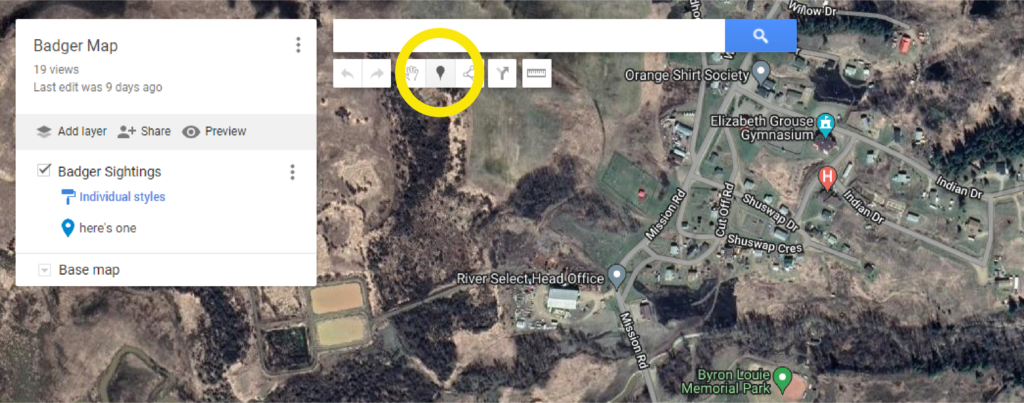The Public Asked to Contribute to Interactive Badger-Tracking Map

We are asking residents and visitors of Sugar Cane, BC about any badger activity noticed in the last few years. Please drop a pin on locations within IR 1 (Sugar Cane) where you have seen a badger or signs of badger activity, along with your name (optional), the date you saw it and a description of what you saw (ex. signs of digging, multiple holes, the badger itself). This will help WLFN find out where badger activity is occurring and what kind of work we can do to improve their habitat. Participants names will be entered into a draw for a FireSmart gift bag.
Click here to access the map
To add a sighting, click the “add marker”, and add the details of your sighting to the marker (outlined in yellow, below). Unfortunately, a google or gmail account is required to contribute to the map. If you would like to add a sighting but don’t have a gmail account (or a friend or relative who can do it on your behalf), please contact WLFN FireSmart Coordinator Willem Faasse to have your sighting added: willem.faasse@wlfn.ca or 778 417 0192

Williams Lake First Nation Grassland Habitat Restoration Project
This effort began in January 2022 with funding From Environment and Climate Change Canada. Our goal is to restore grasslands on I.R.1 by resuming the practice of cultural burning. Burning accumulated grass fuels will reduce the risk of unplanned wildfire on reserve and reinvigorate soils, while removing new forest growth on land that was historically open and was only recently forested due to fire suppression. Restoring grassland will create better habitat for American Badger and Lewis’s Woodpecker, two critically endangered grassland-dwelling animals found here in Williams Lake. Badgers prefer loose soil for digging and hunting other animals that live underground, like voles and marmots. Lewis’s Woodpecker hunts insects by catching them mid-air and prefer to nest in cavities found in Poplar trees. Both species require grassland and open forest, and both have seen their habitat reduced in size by agriculture, development and encroachment of trees. These lands have adapted to thousands of years of fire started by people or lightning, hosting plant and animal species that need fire to reproduce and thrive. By identifying where these animals are living, you can help us plan the best location for future grassland restoration treatment.